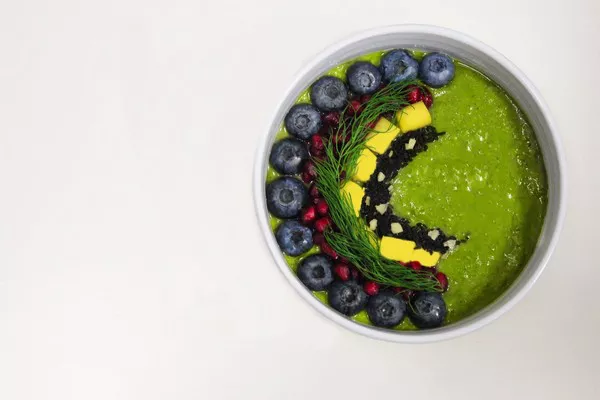Box scars, a type of acne scar that presents as deep, angular depressions in the skin, can leave lasting marks on one’s complexion and self-confidence. While professional medical treatments are available, home remedies offer a natural and accessible approach to managing box scars. In this comprehensive article, we delve into the world of box scars, exploring their causes, characteristics, and the best home remedies, as well as considering the importance of seeking medical guidance for optimal scar management.
Understanding Box Scars
Box scars, also known as “angular scars,” develop when the skin’s collagen is damaged due to inflammatory acne. Collagen is a structural protein that gives skin its firmness and elasticity. When acne inflammation damages collagen fibers, the skin loses its smooth texture, leading to the formation of scars. The inflammation causes tissue loss and a loss of collagen, resulting in depressions that appear as box-like shapes on the skin’s surface.
Characteristics of Box Scars: Appearance and Features
Box scars, a type of acne scar, have distinct characteristics that set them apart from other types of scars. These angular depressions in the skin’s surface can leave lasting marks on the complexion. Here are the key characteristics that define box scars:
1. Angular Shape: Box scars are characterized by their angular and well-defined shape. They appear as sharp-edged depressions in the skin, resembling small boxes or craters.
2. Depressions: Unlike raised or hypertrophic scars, box scars result in depressions or pits in the skin. These depressions can vary in depth and width, giving the skin a textured appearance.
3. Distinct Edges: Box scars have clearly defined edges that distinguish them from other types of scars. The edges of these scars are often perpendicular to the skin’s surface, contributing to their box-like appearance.
4. Wide Appearance: One of the defining features of box scars is their width. These scars tend to be wider than other types of scars, such as ice pick scars. The width can vary depending on the severity of the underlying tissue damage.
5. Variability: Box scars can vary in size, shape, and depth. Some may be smaller and shallower, while others can be larger and more pronounced. This variability contributes to the unique appearance of each individual scar.
6. Tissue Loss: Box scars result from tissue loss due to inflammation and collagen damage caused by inflammatory acne. This loss of collagen and tissue creates the depressions seen in the skin’s surface.
7. Texture: The texture of box scars can be uneven and rough. The skin around the scar may appear raised, while the scar itself appears depressed. This contrast in texture can make box scars more noticeable.
8. Post-Inflammatory Hyperpigmentation (PIH): In some cases, box scars may be accompanied by post-inflammatory hyperpigmentation, which is a darkening of the skin in the scarred area. This can further contribute to the scar’s visibility.
9. Location: Box scars can occur on various parts of the face, back, and chest, where inflammatory acne lesions have caused tissue damage. They are commonly found on the cheeks and temples.
Factors Contributing to Box Scars
Several factors can lead to box scars:
1. Severity of Acne: Severe and inflammatory acne lesions are more likely to cause box scars.
2. Skin Type: People with certain skin types, such as those prone to excessive scarring, may be more susceptible to developing box scars.
3. Genetics: Genetic predisposition can influence how your skin responds to acne and heals from scars.
Home Remedies for Managing Box Scars
While professional treatments like laser therapy, chemical peels, and microneedling are effective for treating box scars, several home remedies can complement your scar management routine. These remedies focus on promoting collagen production, improving skin texture, and reducing the appearance of scars:
1. Aloe Vera Gel: Aloe vera contains compounds that aid in wound healing and skin regeneration. Apply pure aloe vera gel to the scarred area daily to promote healing.
2. Vitamin E Oil: Vitamin E is known for its antioxidant properties that can help with skin repair. Apply vitamin E oil to scars and massage gently.
SEE ALSO: Vitamin E Oil or Cream for Scars: Which Is Better?
3. Lemon Juice: The natural acidity of lemon juice can help exfoliate dead skin cells and improve skin texture. Dilute lemon juice with water and apply it to scars for a few minutes before rinsing.
SEE ALSO: Can Lemon Remove Pimple Marks? Unveiling the Truth
4. Honey: Honey is a natural moisturizer that can promote wound healing and collagen production. Apply raw honey to scars and leave it on for 15-20 minutes before rinsing.
5. Coconut Oil: Coconut oil is rich in fatty acids that nourish the skin and promote healing. Gently massage coconut oil onto scars daily.
6. Rosehip Oil: Rosehip oil is packed with vitamins and antioxidants that support skin regeneration. Apply a few drops to scars and massage in a circular motion.
SEE ALSO: The Efficacy of Essential Oils in Scar Reduction: You Need to Know
7. Oatmeal Mask: Oatmeal has soothing and exfoliating properties. Mix oatmeal with honey and water to create a paste, and apply it to scars for 15-20 minutes before rinsing.
8. Hydration and Nutrition: Staying hydrated and consuming a balanced diet rich in vitamins, minerals, and antioxidants supports overall skin health and healing.
Important Considerations and Caveats for Home Remedies of Box Scars
While home remedies can play a role in scar management, it’s important to approach them with caution:
1. Patch Test: Before using any remedy, conduct a patch test to ensure you don’t have an adverse reaction.
2. Consistency: Consistent application over time is key. Results may not be immediate, so patience is essential.
3. Consultation with Professionals: If you’re unsure about a remedy or if your scars are severe, it’s advisable to consult a dermatologist before trying home treatments.
The Professional Interventions for Box Scars
While home remedies can provide some benefit, professional interventions often yield more significant and lasting results. Dermatologists and skincare professionals can offer tailored treatments based on your specific scar type and skin condition. These treatments may include:
1. Laser Therapy: Laser treatments can stimulate collagen production and improve skin texture.
2. Chemical Peels: Chemical peels exfoliate the skin’s surface, encouraging the growth of new, smoother skin.
3. Microneedling: Microneedling creates controlled micro-injuries to stimulate collagen production and improve scar appearance.
SEE ALSO: Scar Management: 9 Dermatologist-Approved Recommendations for Skin Healing
FAQs About Box Scars and Their Management
1. Can box scars be treated at home?
Yes, there are several home remedies that can help improve the appearance of box scars. These remedies focus on promoting collagen production, exfoliating dead skin cells, and supporting skin regeneration. However, it’s important to approach home remedies with caution and consider seeking professional guidance for severe scars.
2. How long does it take for home remedies to show results?
Results from home remedies may vary and may not be immediate. Consistent application over a period of time is key. It’s important to have realistic expectations and be patient while waiting for improvements.
3. Are there any risks or side effects associated with using home remedies for box scars?
While home remedies are generally safe, it’s essential to conduct a patch test before using any remedy to ensure you don’t have an adverse reaction. Some remedies, like lemon juice, can make the skin more sensitive to sunlight, so sunscreen is recommended.
4. Can box scars be completely removed with treatments?
While professional treatments can significantly improve the appearance of box scars, complete removal may not always be achievable. The goal of treatment is to minimize the visibility of scars and improve skin texture.
5. How do I decide between home remedies and professional treatments for managing box scars?
The decision between home remedies and professional treatments depends on the severity of your scars, your skin type, and your desired results. Consulting a dermatologist can help you make an informed decision based on your individual needs.
6. Can I combine home remedies with professional treatments?
Yes, in many cases, combining home remedies with professional treatments can provide enhanced results. However, it’s important to follow the recommendations of your dermatologist or skincare professional to ensure the treatments complement each other.
7. How can I prevent box scars from forming in the first place?
Preventing box scars involves addressing acne promptly to minimize inflammation. Avoid picking or squeezing acne lesions, as this can worsen scarring. If you have a history of severe acne, consider seeking early treatment from a dermatologist to prevent scarring.
Conclusion
Box scars may leave an indelible mark on the skin, but they need not define one’s appearance or self-esteem. While home remedies can offer a natural and accessible approach to scar management, it’s crucial to approach them with realistic expectations and consider seeking professional guidance. By understanding the causes of box scars and exploring a range of treatment options, individuals can make informed decisions about their scar management journey. Whether opting for home remedies or professional interventions, the goal remains the same: to restore confidence and achieve smoother, more even skin.
[inline_related_posts title=”Related Topics” title_align=”left” style=”list” number=”3″ align=”none” ids=”1884,1830,1793″ by=”categories” orderby=”rand” order=”DESC” hide_thumb=”no” thumb_right=”no” views=”no” date=”yes” grid_columns=”1″ post_type=”” tax=””]



































